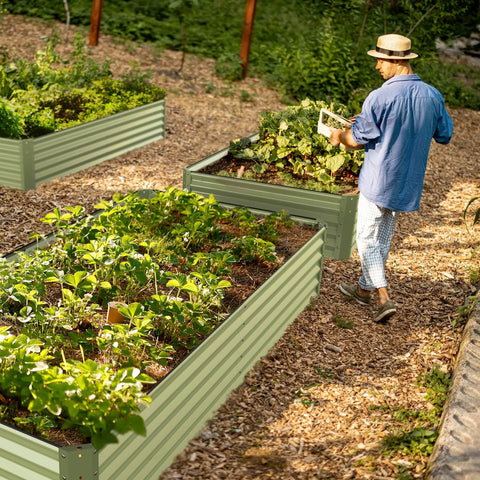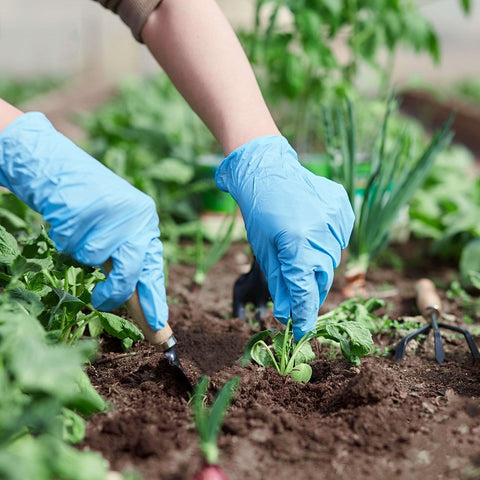Whether you're a beginner or a seasoned garden keeper, we think this selection of plants could be your new favorite.The following content also has some reference value for raised garden beds.
- Chinese Chives
From a horticultural point of view, these leeks are the perfect complement to scallions. This plant is not susceptible to heat, is also resistant to freezing, and is a perennial that provides highly scented flat leaves and delicate white flowers all year round, with a distinct garlic flavor. Not to mention, you'll be attracting bees and butterflies with flowers and providing pest control to surrounding plants that are prone to aphids, mites, Japanese beetles, and even pesky rabbits.
- Bean seeds
Whether you've noticed or not, broad beans are having a moment. They seem to be on every menu, not to mention top of the market reports, and promise to be the next big thing for plant-based protein... favas are more incredible than ever.
Broad beans are one of the easiest cover crops to grow in the garden, not only fixing nitrogen in the soil, but also improving soil texture, suppressing weeds, retaining water and attracting pollinators. So consider using this dual-purpose bean as a resting bed. We recommend trying unexpected heirloom varieties in your mix, such as the brightly colored Bolivian purple (provided you can still find them).

3. Nasturtium
Sure, it's so ubiquitous that some people even consider it a weed, but in the West, nasturtiums continue to grow in fields and on plates. Try mixing different colored flowers and variegated leaves into your planting mix for a chic cooking moment. We also like to use this plant to control pests in the garden. When planted in areas with aphid problems, they can act as "trap plants" to keep insects out of more precious produce.
If you're in the mood for more potatoes, why not try Peru's delicious tubers?
They can be planted either in containers or on the ground, yet in Cui's experience, they are hard to kill, but also hard to succeed. The trick is to plant in mid to late spring, giving the tubers enough time to mature for harvest in November or December. Extreme heat can kill them off, so staying in partial shade and keeping an eye on the weather during the summer months is key. Only a handful of professional nurseries currently offer these tubers, so if you're a little timid about the idea of growing your own, you can try one of the seven varieties chosen by Girl & Dug and, you know, set one aside to germinate so you can try growing one of your favorite tubers at home.
- Oyster Leaf
Edible flowers are nothing new, and oyster leaves, known for their thick, tender leaves, have a saltiness similar to oysters (some people even say they smell seaweed). They also have gorgeous blue bell-shaped flowers that have a similar oceanic flavor. This precious plant comes with a caveat, it has a very low germination rate, but once you have successfully cultivated this plant, it will be vibrant and has the potential to overwinter in a more temperate climate. So be sure to plant a few more seeds and pray for their return.
- Radish Pods
We've all had the experience of plants being sown before harvest day, and you can eat the seed pods that form after the turnip blooms, and the flavor is amazing when pickled. So this year, we're encouraging home growers to skip the root and wait for the real prize: planting pods. When I stumbled upon this delicacy a few years ago, I asked Choi if there was a particular radish that produced the best pods, and he went into some detail, "The purple white radish is the most popular, with its dramatic mauve pods that are both spicy and sweet". In second place were watermelon radishes and lime radishes, whose bright green pods made it even spicier.
With these carefully selected seeds, it's time to make room for our future of flavorful transplants. Spring is here, so try something new in the garden and on your plate this year - we hope you've been inspired too!









